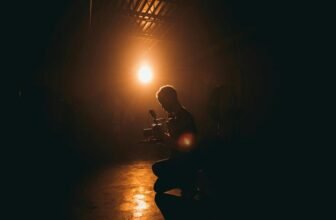
When venturing into the realm of landscape photography, the lens you choose becomes your window to vast landscapes waiting to be captured in all their glory. The right lens can make the difference between a mundane shot and a breathtaking masterpiece. But how do you navigate the sea of options and find the one that will truly elevate your landscape images? By understanding the nuances of focal length, aperture, and specialized features, you can unlock the full potential of your photographic vision. So, before you embark on your next photographic adventure, consider the impact your lens choice can have on your landscape compositions.
Understanding Focal Length
Understanding Focal Length is crucial for capturing stunning landscape photographs. Focal length determines the field of view of your lens, affecting how much of the scene will be included in your shot. When it comes to landscape photography, wide-angle lenses with focal lengths between 14mm and 35mm are commonly used. These lenses allow you to capture vast landscapes and emphasize the sense of depth in your photos.
On the other hand, telephoto lenses with focal lengths above 70mm can be useful for isolating specific elements in the landscape, such as distant mountains or individual trees.
To make the most out of your focal length choice, consider the composition of your shot. Wide-angle lenses are great for expansive scenes that showcase a sense of scale and grandeur. Experiment with different focal lengths to see how they impact the mood and storytelling of your photographs. Remember, the focal length you choose can significantly influence the final look and feel of your landscape images.
Evaluating Aperture Options
When evaluating aperture options for landscape photography, consider how the aperture setting impacts depth of field and overall image sharpness. The aperture, represented by the f-stop number, controls the size of the opening in the lens through which light enters the camera.
A wider aperture (lower f-stop number) lets in more light, resulting in a shallower depth of field and potential background blur, ideal for isolating subjects in the foreground. On the other hand, a narrower aperture (higher f-stop number) allows less light, resulting in a greater depth of field, keeping more of the image in focus from the foreground to the background.
To achieve maximum sharpness in landscape photos, it's important to find a balance between the desired depth of field and the overall sharpness of the image. While wider apertures may create a beautiful background blur, they can sometimes sacrifice overall sharpness. Experimenting with different aperture settings in varying lighting conditions will help you determine the best aperture for your landscape photography needs.
Considering Lens Weight and Size
Considering the weight and size of your lens is crucial when preparing for landscape photography. Opting for a lightweight and compact lens can make a significant difference during long outdoor shooting sessions. Heavy lenses can be tiresome to carry around, especially when hiking to remote locations or capturing multiple shots in a single day. Additionally, a smaller lens can offer more convenience when setting up your gear and moving from one vantage point to another quickly.
When choosing a lens for landscape photography, keep in mind that larger lenses might provide better image quality due to superior optics and construction. However, this improvement in image quality comes at the cost of increased weight and bulkiness. It's essential to strike a balance between image quality and practicality based on your shooting style and preferences. Some photographers prioritize portability and ease of use over slight enhancements in image sharpness, while others prioritize image quality above all else.
Ultimately, selecting a lens that matches your shooting needs and preferences will enhance your overall photography experience.
Exploring Specialized Lens Features
Exploring the unique capabilities of specialized lenses can elevate your landscape photography to new heights. When delving into specialized lens features, consider options like tilt-shift lenses. These lenses allow you to control perspective distortion, making them ideal for architecture and landscape shots where maintaining straight lines is crucial.
Additionally, wide-angle lenses are fantastic for capturing vast landscapes in all their glory. They excel at creating a sense of depth and scale, pulling viewers into the scene. On the other hand, telephoto lenses compress the elements in a scene, bringing distant subjects closer and providing a different perspective for your landscape compositions.
Don't underestimate the power of macro lenses either; they reveal intricate details in small subjects like flowers or textures that can add a unique touch to your landscape images. By understanding the strengths of these specialized lenses, you can choose the one that best suits your creative vision and enhances your landscape photography skills.




